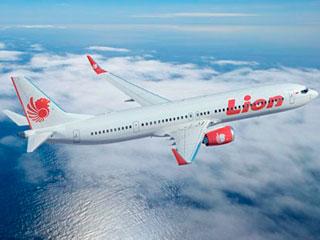
By Ritu Mousumi Tripathy
As it wrapped up the year 2010 by announcing its second lunar mission a success, China stepped into 2011 to achieve more feats in space technology and become a leading global space prowess.
When the second Chinese unmanned lunar probe, Chang'e-2, was completing six months in orbit after successfully accomplishing its mission, China was gearing up for another significant breakthrough -- test of space docking technology as part of plans to set up a manned space station.
The Asian power unveiled the blueprint of its manned space station in April 2011, with a target to make it operational by 2020. The 60-ton space station model consisting of three modules was showcased as part of China's ambitious space programme to send astronauts to Moon and beyond.
The test of space docking technology formed the first phase of the audacious plan. It involved the unmanned space module, Tiangong-1 (Heavenly Palace) and three Shenzhou series spacecraft.
On November 17, 2011 China announced its maiden space docking experiment successful when the unmanned Shenzhou-8 spacecraft landed back on Earth safely following the first "space kiss".
The experiment witnessed the two unmanned spacecraft quietly coupling in space at a height of over 340 kms above the Earth. During the 49-day space mission, Shenzhou-8 autonomously docked, de-linked and re-docked with the prototype Tiangong-1 space lab.
The successful feat established China as only the third country after the US and Russia to develop and test space rendezvous technology and took it a step ahead in its ambition to occupy the space with its own space station in 2020.
Though considerably small in size as compared to the existing International Space Station (ISS) which is a collaboration between five space agencies -- US's NASA, Europe's ESA, Japan's JAXA, Russia's RKA and Canada's CSA -- the Chinese space station, if operational by 2020, might play a significant role as it would be airborne around the same time when the ISS gets retired.
China took a major leap in its decades-old space programme when its Shenzhou 5 spacecraft put the country's first astronaut in space in 2003. Five years later, Chinese astronauts took their first spacewalk.
Since then, there is no looking back.
After successfully orbiting two unmanned spacecraft around the Moon in 2007 and 2010, China now aims to send a third lunar spaceship in 2013 that will land on Moon, explore its surface and conduct scientific experiments.
The mission will mark the first step of the second phase of China's ambitious three-phase lunar exploration programme, although a timeframe for a manned Moon landing is yet to be announced.
Mars would be the next destination in China's deep space exploration programme as a spacecraft to the Red Planet is being planned to be launched around late 2013.
To support all its future space missions, China is also getting ready to set up a deep space monitoring network by 2016 which would consist of two monitoring stations in China and another in South America.
Besides the unmanned and manned space flight programmes, China has also taken rapid strides in aerospace technology by launching several communications satellites, weather satellites and experimental satellites.
The 'Beidou' or Compass navigation satellites are being orbited to build-up an indigenous satellite navigation network similar to that of US's Global Positioning System (GPS).
In June 2011, China placed in orbit the ninth Beidou satellite. The indigenous navigation network will eventually consist of 35 satellites to provide navigation services with high precision and credibility for industries and sectors including mapping, fishery, transportation, meteorology and telecommunication in the Asia-Pacific region.
The work-horse Long March family of rockets, which is presently carrying out space launch missions for the country, will also be replaced with advanced, more powerful vehicles having larger thrust to cater to the demand of building a space station. The new-generation rockets are expected to make their first lift-offs around 2014.
Until now, only the US and Russia had maintained an edge over mankind's space ambitions. Now China, after pursuing the space programme for over four decades, has mastered the art of aerospace technology and made its presence felt in space in a clear manner.
The rise of China as a major space power has come at a time when the US, facing financial crunch, is curtailing many of its space programmes.
However, as the cost and complexity of conducting space missions is quite high, the need of the hours is more of collaboration and cooperation rather than competition that can keep mankind's space quest alive and moving.
 Previous Article
Previous Article













The Indian Air Force, in its flight trials evaluation report submitted before the Defence Ministry l..
view articleAn insight into the Medium Multi-Role Combat Aircraft competition...
view articleSky enthusiasts can now spot the International Space Station (ISS) commanded by Indian-American astr..
view article